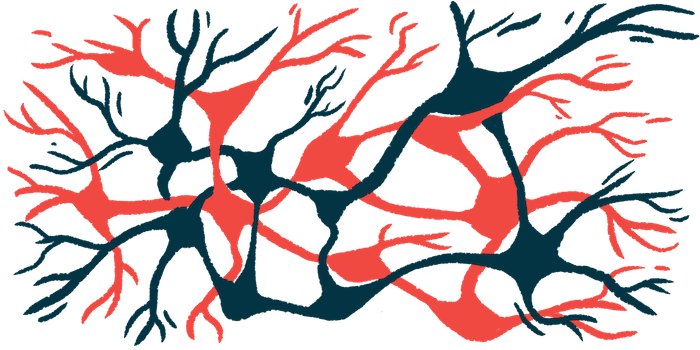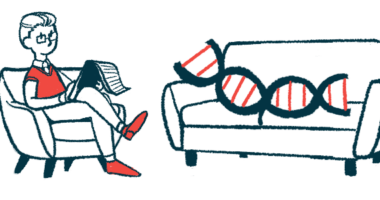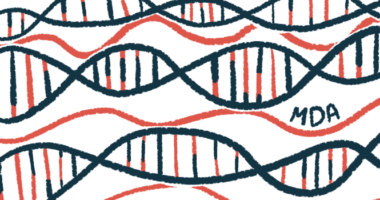Metric may predict response to SMA gene therapy Zolgensma
Study: Cumulative motor index assesses 4 major movement-related nerves

A technique to estimate the health of nerve cells that control movement may help predict how strongly some individuals will respond to the spinal muscular atrophy (SMA) gene therapy Zolgensma (onasemnogene abeparvovec-xioi), a study reports.
This metric, called the cumulative motor index (CMI), assesses four major movement-related nerves. The CMI before gene therapy correlated strongly with the peak CMI value after three years in people with two copies of the SMN2 gene. This means measuring CMI may help clinicians determine if an individual is a good candidate for gene therapy.
“These results, associated with the easiness and [minimal] invasiveness of the … technique, strongly support the validation of CMI as a guide for optimal patient selection and therapeutic management in patients with early onset SMA,” researchers wrote.
The study, “Cumulative motor index in spinal muscular atrophy after gene therapy: baseline predicts maximal recovery,” was published in Clinical Neurophysiology.
Zolgensma gene therapy provides working copy of SMN1
Mutations in the SMN1 gene, which contains instructions for cells to produce the survival motor neuron (SMN) protein, are the most common cause of SMA. Mutations in SMN1 lead to progressive loss of specialized nerve cells called motor neurons and to disease symptoms.
Zolgensma provides a working copy of SMN1, allowing the body to produce more functional protein. Estimating the likelihood of a strong response could give clinicians more information when assessing treatment options.
The level of motor impairment is one predictor of response — less impaired patients often experience greater benefits from Zolgensma. People with more copies of SMN2, a backup gene that produces a lesser amount of working SMN protein, generally respond more strongly to treatment.
Existing motor function scores in SMA may be influenced by differences in cooperation or inadequate training, the researchers wrote, adding that they are time-consuming and may not always be the best way to assess the challenges of SMA patients after gene therapy.
Compound muscle action potentials, or CMAPs, may provide an alternative biomarker. Recorded from muscles after applying a stimulus to a motor nerve, CMAP is the sum of electrical signals in multiple muscle fibers.
“CMAP technique is well-suited to routine clinical practice, especially in young children, because its implementation is quick and minimally invasive,” the research team wrote.
Study assessed CMI as a potential biomarker
In the present study, the team investigated changes in CMI in the two to three years following Zolgensma treatment. They aimed to assess its potential utility as an SMA biomarker. To obtain a CMI score, the scientists measured CMAP amplitude of some of the main nerves in the arms or legs: median, ulnar, fibular, and tibial.
Nineteen children participated, 18 with SMA type 1 or type 2 and one who hadn’t yet experienced symptoms. At the time of treatment, their mean age was 8.5 months. Twelve had two copies of SMN2, while the remainder had three. Thirteen participants had three years of follow-up data; seven of them received treatment with Evrysdi (risdiplam) afterward.
In general, the CMI increased during follow-up, followed by a plateau that was lower for patients with two SMN2 copies. Motor function, measured using several clinical scales, improved during the first six months, also followed by a plateau.
This is a robust finding from the dataset presented here which requires confirmation in a larger population.
Plateau values corresponded strongly to whether participants required additional therapies after the study. A panel of expert clinicians made these treatment recommendations without knowing participants’ CMIs.
“The strong association between a CMI plateau and the indication of a second treatment line underscores the clinical relevance of this biomarker,” the team wrote.
There was also a significant correlation between CMI before treatment and at three years, as seen in nine individuals with two SMN2 copies. Participants in this group with higher starting CMIs had higher CMIs at the end of three years.
Overall, this suggests that measuring CMIs before treatment in people with two SMN2 copies could predict their response to gene therapy.
“This is a robust finding from the dataset presented here which requires confirmation in a larger population,” the researchers wrote. “However, we observed that patients with 3 copies of SMN2 always had a significant recovery potential regardless of their baseline condition. In contrast, patients with 2 copies of SMN2 with a low CMI at [study start] will have a lower recovery potential. It is crucial to be aware of this limited recovery after [Zolgensma] and to inform the family accordingly before treatment implementation.”









